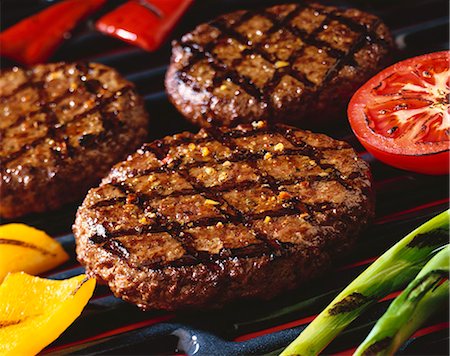
Grilling is an enjoyable activity for the whole family. Food Network chefs share their best grilling tips. These recipes can be prepared using a grill, or a stovetop. You can make grilled salmon and steaks, or even a grilled dessert. There are many great ideas for meals and tips to cook fish and meat on the barbecue.
Bobby Flay is the king of burgers. His Bangin’ Burgers course can be found on the Food Network Kitchen App and will teach you how make the perfect hamburger. Bobby Flay's Ratatouille Salad will help you make a French classic dish. The Food Network offers many different recipes. No matter your taste preferences, you will find something tasty to grill.
The Food Network offers a variety of recipes including grilled poundcakes and grilled pineapples. If you're looking for a lighter dessert, try grilled strawberries. There are many great options, including shrimp, roasted vegetables, and even grilled asparagus. Burgers are a meat-centric option. You can also add herbs and spices to a seasoned patty. For a family-friendly meal, you can make fruit skewers.

Different grilling techniques are available. There are two options: grilled zucchini or grilled asparagus. Both can both be made with jerkseasoning and served alongside mashed potatoes. If you'd like something sweeter, try Molly's smoked ribs. You can then top the ribs with sweet and sour cream for some extra flavor. Rachael's grilled shrimp are sprinkled with curry spice.
You can also grill desserts. Grilled pound cake with lemon juice & apricots is another option. These desserts are great for summer, and can be made outdoors without needing to heat the kitchen. They can also be served with frozen fruit. It is best to grill the fruits until they are charred. You can play with fruit in any way you like. You can add some of the same ingredients to your favorite smoothies.
FAQ
Are there any requirements to become a chef?
No. No. Many chefs began their careers learning by themselves. Some even went to culinary schools to gain practical experience. Many chefs prefer to attend culinary school for the increased opportunities to learn and grow as professionals. Culinary schools allow students to learn hands-on skills, and this helps them improve their cooking knowledge.
Can I learn to cook with my kids?
Yes! Yes, kids love to help in kitchen. It's an enjoyable activity that teaches responsibility and teamwork. From washing vegetables to chopping onion, children can help. If your children follow safe practices when handling knives, they will enjoy helping you cook.
What should a beginner chef learn?
Beginners should begin cooking simple dishes like soup, pasta, and rice. If you want to learn how to cook, go for a recipe book or YouTube video. It's much more fun to cook with someone you know. Enjoy cooking with your family, friends, or both.
How can I get hired as a cook?
A word of mouth referral can lead to a job as cook. Your friends and family members might know of a restaurant that needs additional staff. You might also find openings advertised on websites or bulletin boards by restaurants.
Do I need any special equipment to cook?
No, you don't need any special equipment to learn to cook. The best tools will make cooking more enjoyable. For example, you could use a knife instead of a fork to eat pasta or a whisk instead of a hand mixer to whip egg whites into stiff peaks. Having the right tools can make cooking less daunting and allow you to get started faster.
Statistics
- The median pay for a chef or head cook is $53,380 per year or $25.66/hour, according to the U.S. Bureau of Labor Statistics (BLS). (learnhowtobecome.org)
- You'll be amazed that over 90% of CIA students receive scholarships and grants to finish their culinary studies. (ischoolconnect.com)
- According to the BLS, chefs earn $58,740 a year. (learnhowtobecome.org)
External Links
How To
How to make the perfect omelet
Omelets are a favorite breakfast food of mine. How do you make them perfect? I've tried many different methods and recipes, but none of them seem to work! So I am sharing some tips and tricks today to help you make fluffy, delicious omelets every morning.
We should first know that eggs are very temperamental ingredients when making omelets. It is important that eggs are fresh from an organic market and kept cool until used. If you don't keep them cold enough, the whites won't form properly, and the yolks will break down too much and become runny. This can make your omelets look bizarrely colored. It is best to use room-temperature eggs if you are going to cook them right away.
Another tip is to separate each egg before adding them to the saucepan. You don't want any white to get mixed up with the yolk because this could cause the omelet to curdle.
You could end up burning the bottom half of the egg if the egg is added directly to the heat source. Instead, put the egg in the microwave for 10 seconds before putting it into the pan. The microwave heat cooks your egg just right, without it becoming too soft.
Let's now talk about mixing eggs. Mix eggs well together. You need to turn the bowl of the mixer upside down. Then, vigorously shake the bowl. This allows the air to be whipped and the egg to be mixed thoroughly.
Now comes the fun part - pouring the milk into the mixture. First, pour half of the milk into the beaten eggs and then fold the eggs gently into the remaining milk. You don't need to worry if streaks remain. They will disappear once you flip your omelet.
After you have folded the eggs, heat the oil in a pan over medium heat. Once the oil has started to sizzle, turn the heat down to low. When the oil is hot enough, add 1/4 cup butter to the pan. Stir it around until the butter covers the entire pan. Now carefully crack open the lid of the pan and sprinkle salt into the pan. An additional pinch of salt will prevent the omelet form sticking to your pan.
Once the omelet has formed, cover the pan again and wait for the top side to set completely. Flip the omelet upside down or with a spatula. Cook the other side for another minute or two. Serve immediately after removing the omelet from its pan.
This recipe is best made with whole milk. However, it can also be used with skimmed milk.